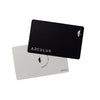
Globally, people are starting to invest in cryptocurrencies. Though buying and owning cryptocurrencies could seem simple, you should give security top priority when protecting your digital resources.
Understanding Hardware Wallets
What is a Hardware Wallet?
A hardware wallet is a tangible tool that safely keeps your private keys, therefore enabling you to handle your bitcoin holdings. Maintaining the security of your cryptocurrency depends on knowing hardware wallets, hence this post will precisely address this issue.
The Cryptocurrency Craze: A Quick Recap
The emergence of cryptocurrencies has made average people blockchain buffs. While getting these digital currency could appear simple, safeguarding them presents a rather different difficulty. Hardware wallets then become the heroes of the narrative here.
Hardware Wallets: The Guardians of Your Digital Wealth
Consider a hardware wallet as your crypto asset equivalent of Fort Knox. Your private keys, the secret codes allowing you access to your digital treasure store, are kept on a physical tool.
The beauty of it, though, is that these clever devices keep your keys off-grid and away from the reach of cybercrime. Absence of internet connection? Not bad. They are the Crypto Superheroes since they protect you from hackers.
How Do Hardware Wallets Work?
Hardware wallets work by generating and storing your private keys, which are essential for signing transactions and proving ownership of your coins. By connecting your hardware wallet to a computer or smartphone, you can access your cryptocurrency holdings and initiate transactions when needed. The key point? Your private keys never leave the hardware wallet, ensuring that transactions remain secure.
Types of Hardware Wallets
There’s a variety of hardware wallets out there. Some are USB-based, plugging into your device like a reliable companion. Others go the extra mile with Bluetooth or NFC. Think of Ledger Nano S, Trezor, and KeepKey – these are the rockstars headlining the hardware wallet scene.
Why Use Hardware Wallets?
Security first, my friends. These wallets are like fortresses that protect your digital wealth. Unlike software wallets that can be accessed from anywhere online, hardware wallets require physical presence to use. Hackers and malware? They’re not getting past these gates.
And there’s more! Picture PIN codes and passwords as the gatekeepers of your crypto club. Unauthorized access? Not on their watch. Your funds are as secure as a treasure chest.
Cold Storage
Being able to operate without an internet connection makes hardware wallets a type of cold storage. Cold storage is absolutely essential since it guards your bitcoin assets against phishing attempts and hackers from internet sources.
A cold storage wallet also protects your money from technical problems such software faults. Storing your private keys offline via a hardware wallet will help to protect them from outside threats.
Recovery and Backup Options
Should you lose or damage your hardware wallet, backup and recovery choices guarantee your access to your bitcoin holdings. Most hardware wallets use seed words, a set of arbitrary phrases meant to help you retrieve your private keys on another device. You might also make backups and keep them in a safe place as a further measure.
You also have the option of using a security feature like DieFi, which lets you recover your private keys in case of loss.
Thanks to these recovery and backup solutions, you can rest easy knowing your funds are always accessible, even if your hardware wallet is lost or damaged.
Popular Hardware Wallets in the Market
Now, let’s talk about the stars of the show. Meet Ledger Nano S, the red carpet favourite. It’s got all the features – PIN codes, seed words, and backup tricks – and supports a whopping 1,500 cryptocurrencies. Talk about versatility!
Next up, the Trezor hardware wallets. With over 1,000 cryptocurrencies in its arsenal, these wallets mean business. Plus, their open-source technology is like a rock-solid security system.
And last but not least, the KeepKey hardware wallet. Sleek and user-friendly, it comes with a dazzling display screen and supports over 40 cryptocurrencies. Style and substance? Absolutely.
Setting Up Your Hardware Wallet
Stepping into the Wallet World: Unboxing 101
Ready to dive in? Start by unboxing your wallet – it’s like opening a gift on your birthday. Follow the setup instructions: create a password, set up the seed words, and input those PIN codes. Double-check the packaging for all the essentials, like cables and the wallet itself. Before you begin, inspect everything for any signs of damage.
Syncing Up with Your Device: Hello, Future!
It’s connection time. Link your wallet to your device via USB, Bluetooth, or NFC. But wait – make sure to download the official app or software from the manufacturer, or you might end up with a virus. Once connected, your crypto world is at your fingertips. Sending, receiving, and exploring await you!
Security Galore: Setting Up Fort Knox
Let’s talk security. Think of it as fortifying your castle. Strong passwords and PIN codes are your moat and drawbridge. Want extra protection? Multi-signature options are your knight in shining armour.
Phew, that was quite the journey! Hardware wallets are the guardians of your crypto galaxy, keeping your keys offline and out of hackers’ reach. Ledger Nano S, Trezor, and KeepKey? They’re the Avengers of the crypto world.
Follow the setup steps correctly, and your treasure will remain untouchable. Take control of your cryptocurrency – embrace hardware wallets and secure your assets today!


















































